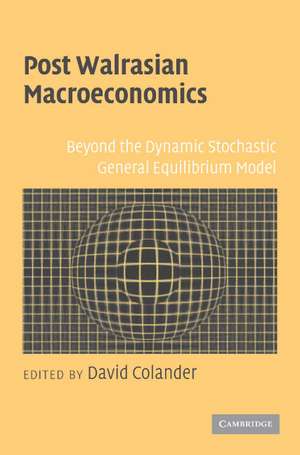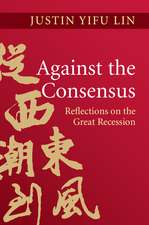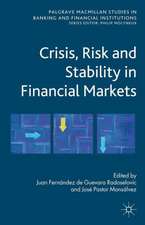Post Walrasian Macroeconomics: Beyond the Dynamic Stochastic General Equilibrium Model
Editat de David Colanderen Limba Engleză Paperback – 16 iul 2006
| Toate formatele și edițiile | Preț | Express |
|---|---|---|
| Paperback (1) | 431.62 lei 6-8 săpt. | |
| Cambridge University Press – 16 iul 2006 | 431.62 lei 6-8 săpt. | |
| Hardback (1) | 427.02 lei 6-8 săpt. | |
| Cambridge University Press – 16 iul 2006 | 427.02 lei 6-8 săpt. |
Preț: 431.62 lei
Nou
Puncte Express: 647
Preț estimativ în valută:
82.60€ • 85.92$ • 68.19£
82.60€ • 85.92$ • 68.19£
Carte tipărită la comandă
Livrare economică 15-29 aprilie
Preluare comenzi: 021 569.72.76
Specificații
ISBN-13: 9780521684200
ISBN-10: 052168420X
Pagini: 438
Ilustrații: 9 tables
Dimensiuni: 153 x 229 x 24 mm
Greutate: 0.59 kg
Editura: Cambridge University Press
Colecția Cambridge University Press
Locul publicării:New York, United States
ISBN-10: 052168420X
Pagini: 438
Ilustrații: 9 tables
Dimensiuni: 153 x 229 x 24 mm
Greutate: 0.59 kg
Editura: Cambridge University Press
Colecția Cambridge University Press
Locul publicării:New York, United States
Cuprins
Part I. Where We Are in Macro and How We Got There: 1. Stories from the haunted vault: notes on a century of macroeconomics; 2. Post Walrasian macroeconomics: some historic links; 3. The DSGE model and the post Walrasian alternative in historical perspective; 4. Who is post Walrasian man?; Part II. Edging Away from the DSGE Model: 5. Social interactions and macroeconomics; 6. Macroeconomics and model uncertainty; 7. Restricted perceptions equilibria and learning in macroeconomics; 8. Not more so: some concepts outside the DSGE framework; Part III. Leaping Away from the DSGE Model: 9. Agent-based computational modeling and macroeconomics; 10. Multi-agent systems macro: a prospectus; 11. Agent-based financial markets: matching stylized facts with style; Part IV. Doing More Good than Harm: Roles of Business and Government in Critical Infrastructure Protection: 12. Characteristics of resilient systems and organizations; 13. Networks and interdependencies; 14. Public - private risk-sharing: the case of terrorism risk coverage; 15. Learning from experience: drawing correct analogies? Letting the data guide theory; 16. The past as the future: the Marshallian approach to post Walrasian macro; 17. Old world econometrics and New World theory; 18. Four entrenched notions post Walrasians should avoid; 19. Confronting the economic model with the data; 20. Extracting information from the data: a European view on empirical macro; Part V. Policy Implications: 21. Economic policy in the presence of coordination problems; 22. Monetary policy and the limitations of economic knowledge.
Recenzii
"This impressive book contains contributions from some of the most inquisitive minds in economics.... [It] provides an excellent introduction...as well as clear indications of the direction that macroeconomics is moving toward." - Eastern Economic Journal
Descriere
This collection outlines a new approach to macroeconomics that employs cutting edge analytic techniques.













